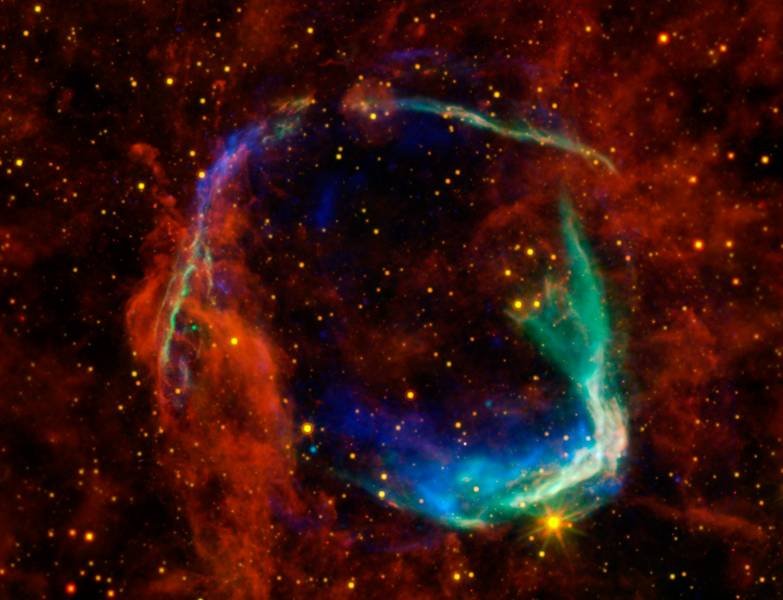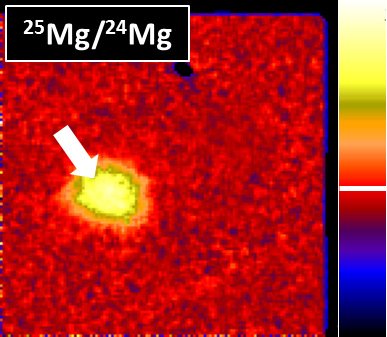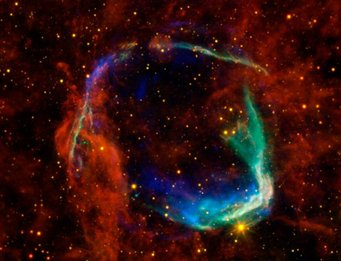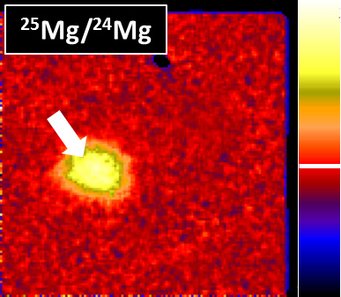The Solar System: More Supernova, Less Red Giant
Meteorite analysis shows that our solar system consists of twice as much supernova dust than previously thought.

For scientists, meteorites are valuable witnesses of our early Solar System. They consist of the oldest building blocks of our planetary system but also contain inclusions of tiny stardust grains, which are older than our sun. The most common type of stardust consists of silicate grains, which are only a few hundred nanometers in size. For the most part, the stardust in meteorites derives from the remains of red giant stars. A smaller yet significant percentage of stardust stems from supernova explosions.
Scientists from the Max Planck Institute for Chemistry have now discovered that the amount of silicate stardust originating from supernovae is twice as high as previously assumed. They estimate the fraction to be between 25 and 30 percent. From this, they have determined that the dust and gas cloud from which our Solar System originated 4.6 billion years ago, contained about one percent of “real” supernova dust.
“Our study shows that a significant proportion of presolar stardust grains found in meteorites, which had been thought to originate from red giant stars, actually stems from supernova explosions,” says physicist Jan Leitner.

The Mainz-based scientists successfully proved this through the precise measurement of the oxygen and magnesium isotope ratios in silicate stardust grains. It emerged that the magnesium isotopic compositions in some of the examined silicate stardust grains can be explained by nova models, but not their oxygen isotope ratios. Although the latter can be explained by red giant star models, this is not the case for the magnesium isotopic compositions.
The measured isotopic compositions of both magnesium and oxygen can, however, be explained by more recent supernova models.
Researchers explain this phenomenon by the fact that the nuclear fusion processes that occur with supernovae, novae and red giants, take place under different conditions. This results in a large number of elements having distinctive isotopic signatures, which leave behind specific “fingerprints” within the silicate grains.
The original assumption that the vast proportion of stardust stems from red giants is based on analyses of oxygen isotope ratios in silicate grains, which differ in very distinctive ways from those of our sun.
The examined stardust grains were discovered in a variety of meteorites found in the Antarctic and the Sahara. In a previous study, Max Planck research scientists had identified the stardust grains by their anomalous oxygen isotopic compositions to determine the abundances of stardust in these meteorites.
The Max Planck research scientists were able to verify this with the help of a special mass spectrometer, the so-called NanoSIMS. This instrument is able to determine the isotopic composition of materials on a size scale of 50-100 nanometers. The precise measurement of the magnesium isotopes only became possible one and a half years ago through the acquisition of a new type of ion source. Before this the ion beam available for magnesium isotope measurements was wider than the grains of interest, precluding accurate analyses because of isotopic dilution with the surrounding material.
Glossary:
A supernova, according to astronomers, is the brief, bright flash of a star, significantly heavier than our sun, caused by an explosion at the end of its life cycle. The original star is destroyed in this process, and the majority of its matter released into interstellar space, leaving a neutron star or a black hole behind.
A red giant is a “dying” star, whose mass is comparable to our sun and that ends as a so-called white dwarf, i.e., a small, very compact star, after ejecting most of its material into interstellar space. Our sun will also become a red giant star in a few billion years, which will alter the oxygen isotopic composition on its surface.
In a nova explosion, hydrogen-rich material is transferred from a companion star to the surface of a white dwarf, triggering a thermonuclear explosion.

